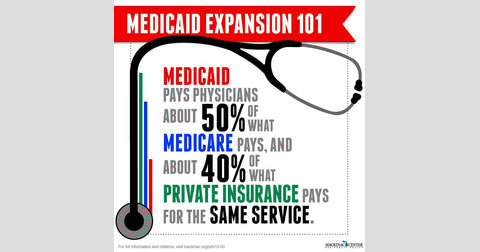The Real Patients of Medicaid: Teraca
Teraca Price is expecting her sixth child. She is covered by Medicaid, but has no regular doctor.
In her second trimester, she said learned she was pregnant after visiting the emergency room for stomach pain and sore teeth. Teraca says she and her children go to clinics for care and says she goes to the emergency room two to three times a year "when she feels sick."
Teraca is like many Medicaid patients who do not have a relationship with a regular physician. Had she had such care, she might have been more inclined to schedule an office visit for symptoms such as stomach pain and avoided the expensive care she got in the ER, where she said her pregnancy was diagnosed.
Research shows that Medicaid patients are twice as likely to visit the ER than non-Medicaid patients. The inefficiency forces Medicaid to cut expenses elsewhere, such as reimbursements to private physicians who then become disinclined to accept new Medicaid patients. Michigan Medicaid pays doctors 42 cents on the dollar, said Avik Roy, a senior fellow at the Manhattan Institute who is an expert in health care and Medicaid.
Opponents of Medicaid expansion in Michigan point to studies that show the program has little effect on health outcomes. Physicians in the state and around the nation point to other policy options like state health plans providing catastrophic care and Health Savings Accounts.
A study on the program in Oregon published by the New England Journal of Medicine found "no significant effect" of Medicaid coverage in important health areas. Meanwhile, other states, like Indiana, offer plans that inject more competition into the system, saving money while offering coverage.
~~~~~
Michigan Capitol Confidential is the news source produced by the Mackinac Center for Public Policy. Michigan Capitol Confidential reports with a free-market news perspective.


 Michigan House rep overstates possible impact of work requirement
Michigan House rep overstates possible impact of work requirement
 Michigan clawing back $2.7B from 350,000 people
Michigan clawing back $2.7B from 350,000 people
 Michigan faces $415M bill for botched benefit errors
Michigan faces $415M bill for botched benefit errors
Jobs agency ghost-writes its own public relations